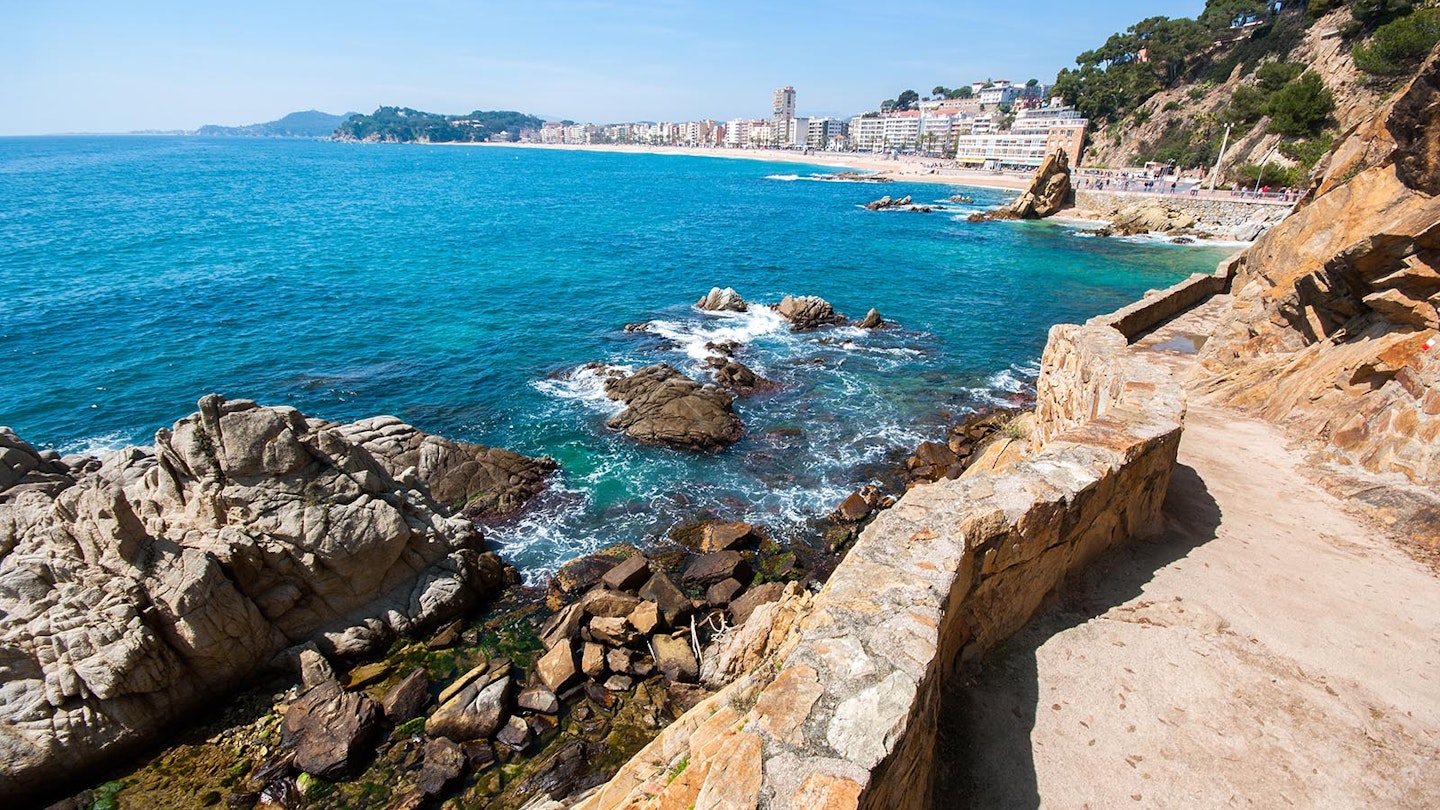Explore the Wonders of Catalonia with iBestTravel
Venture beyond Barcelona and its urban pleasures, and you’ll find a region of forested hills, pristine beaches, and medieval villages.
The dramatic peaks of the Pyrenees offer the perfect backdrop for skiing in winter and hiking in summer. Moreover, the vineyards and rustic taverns are a must for anyone interested in learning how Catalonia became one of Europe’s most celebrated regions for wine and gastronomy.
Take a Tour of a Cava Bodega
Cava, the Catalan answer to champagne, is perhaps the region’s best-known export. The ideal place to sample it is at the source—in one of the Modernista bodegas that dot the area known as the Penedès.
The village of Sant Sadurní d’Anoia is home to two giants, Freixenet and Codorníu, both of which are easily reached by train from Barcelona. Freixenet has been around for a hundred years, featuring tourist facilities like a little train around the vineyards and a tasting room. The historic Codorníu bodega is said to be where it all began and is worth a visit for its spectacular Modernista building alone.
At nearby Vilafranca del Penedès, another eminent cava producer, Torres, awaits, alongside a wine museum, Vinseum, perfect for a diverting hour or two.
Explore the Costa Brava
The long, twisting coastline that runs up to the French border is blissfully unspoilt, due to the difficulty of reaching its towns by public transport. With a car, however, you can visit tiny coves wrapped around golden beaches bordering crystalline waters—some backed by small towns where you might linger over paella, while others remain completely untouched.
The Camí de Ronda, a coastal path originally constructed for police patrols to monitor smuggling at the end of the Civil War, runs almost uninterruptedly along the entire length of the Costa Brava. Today, it serves as a hiking route, where even small sections can be incredibly rewarding—be sure to ask the tourist office for a map.
Make for the Mountains
Though known as a mountain range, Collserola flanking Barcelona to the northwest is really a string of hills providing spectacular views across the city and out to sea.
Similarly promising for a morning’s hike is the small mountain of Montserrat, considered the spiritual home of Catalonia for the Benedictine monastery perched there. Take a cable car or cog-wheel train to enjoy panoramic views.
Skiers will, however, find the Pyrenees appealing, usually boasting a good amount of snow in winter and catering to all budgets and abilities—from family-friendly La Molina to the upscale Baqueira Beret. Glorious mountain towns provide plenty of accommodation and dining options if the resorts or vibrant Puigcerdà don’t entice—La Seu d’Urgell is especially charming, featuring a mostly medieval town with a Romanesque cathedral.
Follow in the Footsteps of Cistercian Monks
Remarkably under-visited by tourists, the town of Montblanc stands out as one of Catalonia’s most picturesque, with a labyrinth of winding streets surrounded by 13th-century walls. An easy train ride from Barcelona, it also features family-run restaurants and hotels, making it a great base to visit the three monasteries in the region: Poblet, Santa Maria de Vallbona, and the Monestir de Santes Creus. Collectively known as the ‘Cistercian Route,’ these extraordinary buildings provide insight into monastic life centuries ago.
The Reial Monestir de Santa Maria de Poblet, built as a palace and religious complex in the 12th century, is truly majestic. You can visit the 14th-century palace, church, chapel, and cloister as part of a guided tour. Equally stunning is the Reial Monestir de Santes Creus, which boasts an evocative Gothic cloister and chapterhouse. The most modest of the three is Reial Monestir de Santa Maria de Vallbona, a functioning convent with a small number of nuns and a former favorite of queens, notably housing the remains of Queen Violant of Hungary.
Head South
For a taste of the variety that Catalonia offers, take a trip south along the coast from Barcelona. Just under an hour away lies the charming, whitewashed Sitges, an upscale town that goes wild during carnival season, largely due to its vibrant LGBTQ community. Continuing south, arrive at Tarragona, renowned for its world-class collection of Roman remains, including a well-preserved aqueduct, amphitheatre, circus, and forum.
Conclude your journey at the Ebre delta, featuring a peaceful region of rice paddies and lakes with flat paths ideal for cycling, and bustling with birdlife, including flamingos. Additionally, its cuisine is unique—make sure to try dishes featuring locally grown rice and don’t miss the eel.
Wander the Medieval Heart of Girona
Girona deserves at least a couple of days for exploration. This splendid medieval town, divided into old and new by the river Onyar, boasts streets so well-preserved that it was chosen as a backdrop for Game of Thrones. At its core is the lofty 14th-century cathedral, commanding views of what was once the city’s Jewish quarter before the pogrom of 1492. Remaining vestiges include the Banys Àrabs (a Jewish/Muslim bath-house) and the Museu d’Història dels Jueus, an outstanding museum dedicated to the history of the Call (Jewish quarter).
Less known but utterly charming, the Museu del Cinema offers a fascinating look at storytelling, along with the technical and creative aspects of cinema. It features a curious collection of cinematic memorabilia, including the dress worn by Dustin Hoffman in Tootsie, Batman’s mask from the Tim Burton movie, James Dean’s boots from Rebel Without a Cause, and some kryptonite from Superman.




